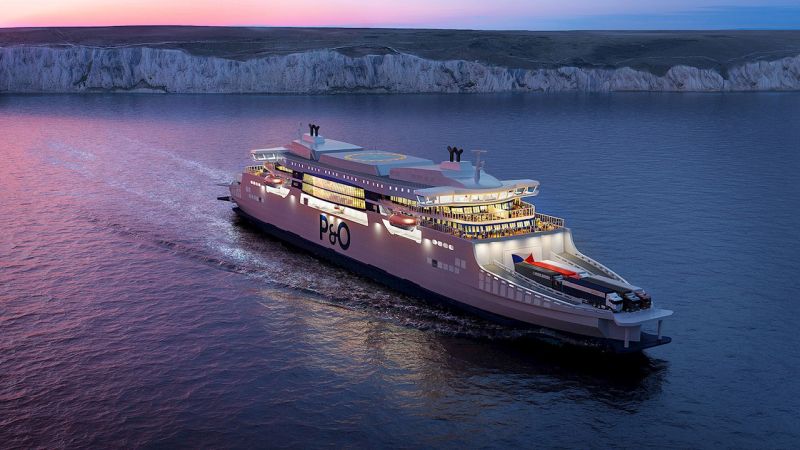ABB powers P&O super-ferries towards new sustainable transport era
ABB to supply electric, digital and connected solutions for P&O Ferries’ two new vessels, including Azipod® propulsion and energy storage, cutting fuel consumption by one ton per return trip across the English Channel
ABB has won a contract with Guangzhou Shipyard International Ltd for supplying a full scope of integrated solutions for P&O Ferries’ two new vessels. The hybrid propulsion solution, using electric power from 8.8MWh batteries and diesel generators, will cut fuel consumption on P&O Ferries’ Dover-Calais route by 40 percent. The batteries will provide full power for harbor maneuvering and stay in port and will prepare the vessels for a zero-emission future once more electric shore charging stations are available.
Equipped with four Azipod® propulsion units per vessel, each rated at 7.5 megawatt, the 230-meter-long vessels will be the largest passenger and freight ferries ever to sail the route when they enter service in 2023. The benefits of bridge-to-propeller integration proved decisive in selecting the hybrid solution for the new ferries, according to P&O Ferries.
In addition to Azipod® propulsion and energy storage, the new ships will feature a comprehensive scope of ABB solutions to cover power and propulsion, automation and power energy management. ABB’s Power and Energy Management System (PEMS™) is closely integrated with the electrical system and ensures optimal use of the vessel’s total power resources by improving the information flow across shipboard systems.
“The P&O ferries under construction at the Guangzhou Shipyard International are truly iconic. We are delighted to strengthen our strategic cooperation with the technology leader ABB and to work together on this leading-edge project, considering ABB’s proven supplier status in the global ferry market,” said Mr. Zhongqian Chen, Chairman of Guangzhou Shipyard International.
“We are proud to have ABB technology at the heart of P&O Ferries’ sustainability program, as it transitions to the zero-emission future envisaged for shipping,” said Juha Koskela, Division President, ABB Marine & Ports.
Built to the double-ended design where the vessels will feature a pair of Azipod® units and a bridge at each end, there will be no need to turn ships in port. The captain and senior officers will simply walk to the opposite bridge, saving seven minutes on each outbound and return journey and one ton of fuel – a sixth of what is used on the 21-mile crossing.
The vessels will also be equipped with ABB Ability™ Marine Pilot Control, the intelligent maneuvering and control system that enables safer, more efficient operations by automating some navigational tasks to allow bridge officers to focus on optimizing overall ship control and positioning.
The vessels’ engines will be equipped with ABB’s Power2 two-stage turbocharging system that will further improve power efficiency and help achieve up to five percent in fuel savings. In addition, the Power2 system will help reduce up to 60 percent of nitrogen oxide emissions.
With over 20 vessels and 27,000 sailings a year via eight routes between the UK, the Republic of Ireland and north continental ports, P&O Ferries is one of the leadingferry and logistics companies in Europe, carrying 8.4 million passengers, 1.6 million cars, and 2.2 million freight units every year.1
The Guangzhou Shipyard International where the vessels will be constructed is recognized as one of the most modern and biggest shipbuilding companies in China and has an increased focus on building sustainable vessels.
Demand for Azipod® propulsion is growing strongly in the global ferry industry carrying around 2.1 billion passengers, 250 million vehicles and 32 million trailers every year. Owners are increasingly choosing Azipod® systems that offer 360-degree rotation of podded propulsors, higher reliability, lower vibrations and more lane meters onboard due to the location of the propulsor outside the hull.
SOURCE: ABB
